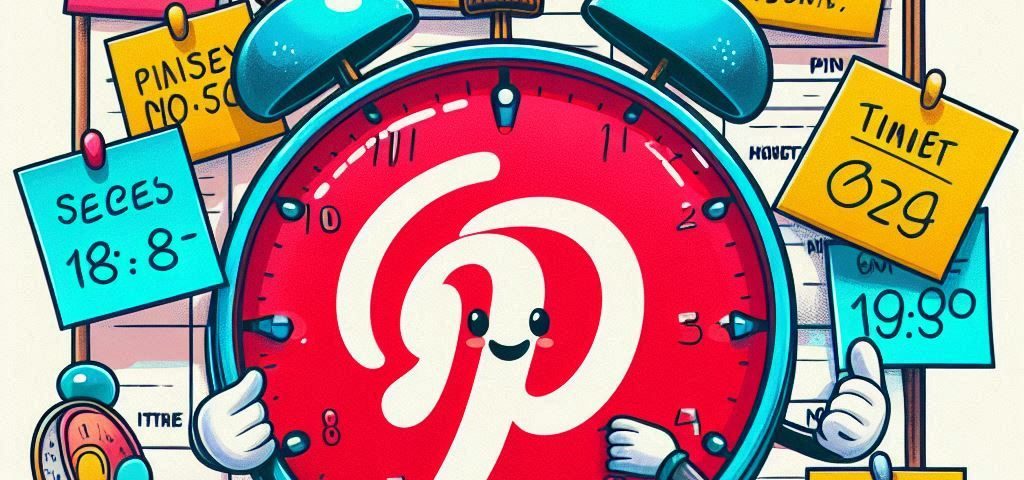Pinterest is a powerful platform for driving traffic and engagement. By effectively managing your Pinterest content, you can attract and grow your Pinterest followers. One effective way to manage your Pinterest content is by scheduling posts. Here, we’ll cover how to schedule Pinterest posts in 2024, ensuring your content reaches your audience at the right time without requiring constant attention.
What Is Pinterest Post Scheduling?
Scheduling Pinterest posts means planning and setting up your pins to be published at specific times in the future. This is useful for maintaining a consistent presence on Pinterest without having to manually post each time. By learning how to schedule Pinterest posts, you can streamline your workflow, save time, and ensure your content is posted at optimal times for your audience.
Why Schedule Pinterest Posts?
Understanding how to schedule Pinterest posts offers several benefits:
- Consistent Posting: Regular posting keeps your audience engaged and can improve your visibility on Pinterest.
- Time Management: Scheduling posts in advance allows you to focus on other tasks while ensuring your Pinterest account remains active.
- Optimal Timing: You can post when your audience is most active, increasing the likelihood of engagement.
- Content Planning: Planning your posts ahead of time helps maintain a cohesive content strategy and avoids last-minute rushes.
How to Schedule Pinterest Posts in 2024: A Step-by-Step Guide
1. Choose a Scheduling Tool
The first step in learning how to schedule Pinterest posts is selecting a scheduling tool. Several tools can help you manage and automate your Pinterest posts, such as:
- Tailwind: A popular Pinterest scheduling tool with features like Smart loop and analytics.
- Buffer: Known for its user-friendly interface and scheduling capabilities.
- Hootsuite: A comprehensive social media management tool that includes Pinterest scheduling.
2. Connect Your Pinterest Account
Once you’ve chosen a tool, the next step is to connect your Pinterest account. This usually involves logging into your Pinterest account through the scheduling tool and granting necessary permissions.
Here’s how to connect your Pinterest account to Tailwind as an example:
- Sign in to Tailwind.
- Go to the “Connect a New Account” section.
- Select Pinterest from the list.
- Log in to your Pinterest account and authorize the connection.
3. Create and Upload Your Pins
With your Pinterest account connected to the scheduling tool, you can start creating and uploading your pins.
- Design Your Pins: Use tools like Canva or Adobe Spark to design eye catching pins.
- Upload Your Pins: In your scheduling tool, upload the pin images and add necessary details such as titles, descriptions, and URLs.
4. Schedule Your Posts
Now comes the crucial part scheduling your posts. This is where you’ll set the times and dates for when you want your pins to be published.
For example, using Tailwind:
- Go to the “Publisher” Tab: Here you can see options to schedule your pins.
- Select “Create a New Pin”: Upload your pin and add details.
- Set the Schedule: Choose the date and time you want the pin to be posted.
- Add to Queue: Save the pin to your schedule.
5. Monitor and Adjust Your Schedule
After scheduling your posts, it’s important to monitor their performance and adjust your strategy as needed.
- Check Analytics: Most scheduling tools provide analytics to track the performance of your pins.
- Adjust Timing: Based on engagement data, you may find better times to post. Adjust your schedule accordingly.
Best Practices for Scheduling Pinterest Posts
Knowing how to schedule Pinterest posts is one thing, but doing it effectively requires some best practices:
- Understand Your Audience: Research when your target audience is most active. Tailor your posting times based on this information.
- Use Quality Images: High-quality, visually appealing pins attract more engagement.
- Maintain a Content Calendar: Plan your content in advance to ensure a consistent and organized posting strategy.
- Test Different Times: Experiment with different posting times to find what works best for your audience.
- Stay Updated: Pinterest’s algorithm and user behavior can change. Stay updated with the latest trends and adjust your strategy accordingly.
Tools to Consider for Scheduling Pinterest Posts
Several tools are available to help you schedule Pinterest posts effectively. Each tool offers unique features:
- Tailwind: Tailwind is specifically designed for Pinterest and provides features like Smartloop, which recycles your best-performing pins.
- Buffer: Buffer offers a simple and intuitive interface for scheduling and managing your Pinterest posts.
- Hootsuite: Hootsuite is a comprehensive social media tool that supports Pinterest along with other platforms, providing a unified dashboard for managing all your social media accounts.
Troubleshooting Common Issues
When scheduling Pinterest posts, you may encounter some issues. Here are common problems and solutions:
- Pin Not Posting: Ensure your pin meets Pinterest’s guidelines and that your scheduling tool is properly connected.
- Inaccurate Timing: Double-check the time zone settings in your scheduling tool.
- Image Quality Issues: Make sure your images are of high quality and adhere to Pinterest’s recommended sizes.
Learning how to schedule Pinterest posts in 2024 can greatly enhance your Pinterest strategy. By choosing the right scheduling tool, connecting your Pinterest account, creating and uploading pins, scheduling them effectively, and monitoring their performance, you can streamline your social media efforts and ensure a consistent presence.
With these tips and best practices, you’ll be well on your way to mastering Pinterest post scheduling. Implement these strategies to save time, improve your engagement, and achieve your Pinterest marketing goals.

